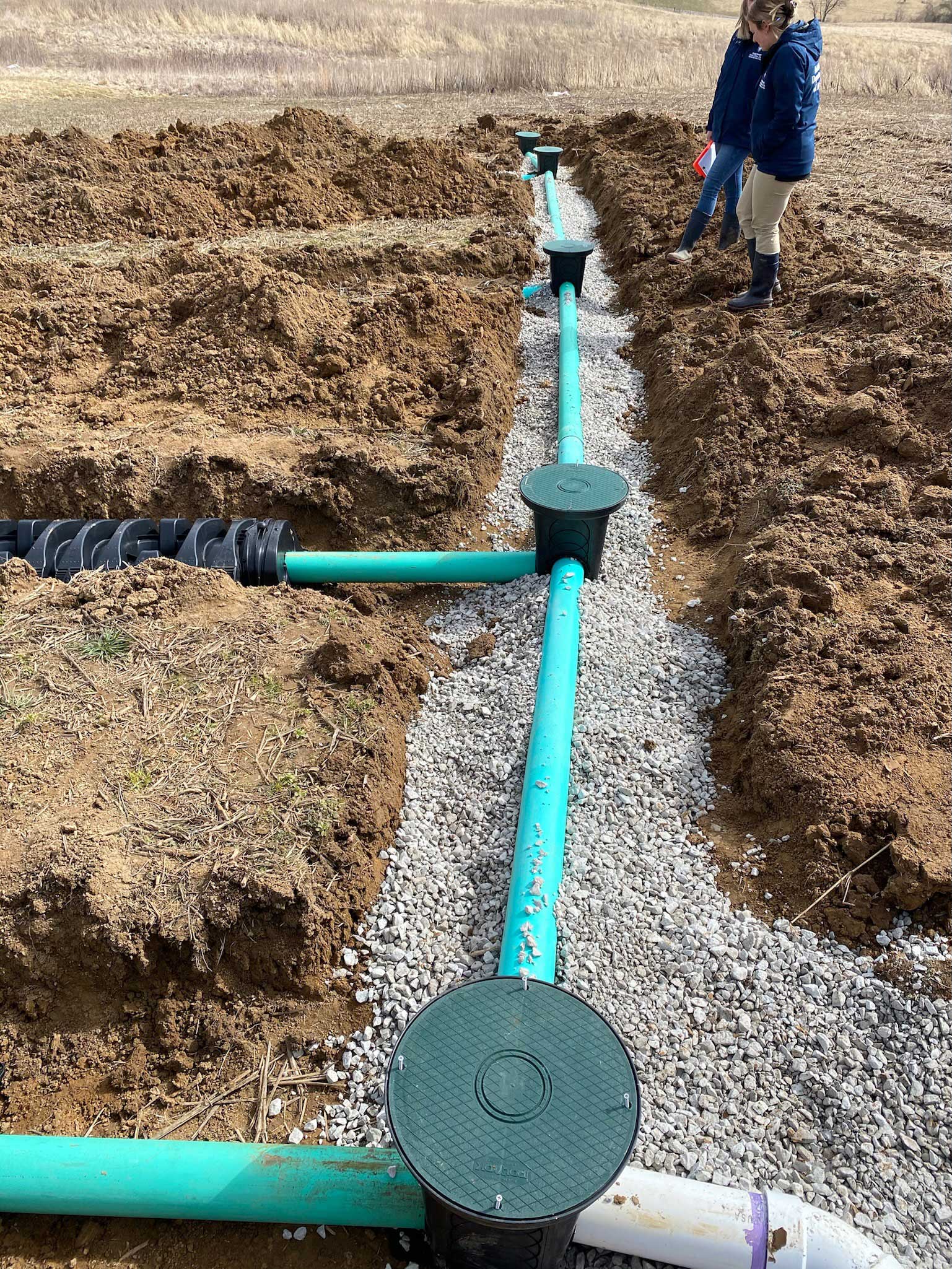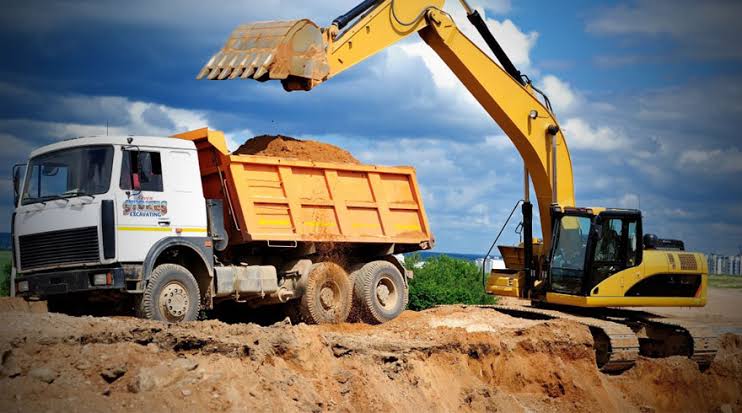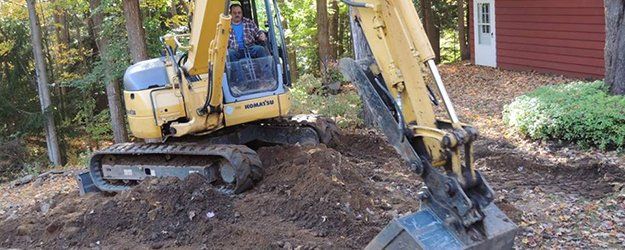Septic Ohio - Comprehensive Septic Tank Solutions in Ohio
Septic Ohio - Comprehensive Septic Tank Solutions in Ohio
Blog Article
In-Depth Exploration: The Scientific Research Behind Superior Excavation Practices
The world of excavation practices is a domain where science intertwines with craftsmanship to unearth the mysteries hidden below the planet's surface. From ancient hand devices to contemporary hydraulic excavators, the advancement of excavation strategies has actually been a testimony to human ingenuity and technological developments. Nevertheless, what genuinely establishes remarkable excavation practices apart is a deep understanding of geological principles, coupled with the utilization of advanced tools and approaches. By checking out the science behind these methods, we can uncover the secrets that exist under our feet and value the accuracy and know-how that go into every dig.
Advancement of Excavation Methods
Throughout history, the advancement of excavation methods has actually played a vital role beforehand building practices and historical discoveries. From the primary tools made use of by our ancestors to the advanced machinery utilized in modern-day times, the progression of excavation methods has actually considerably transformed exactly how we come close to different tasks.
In ancient times, manual labor with fundamental tools such as pickaxes, shovels, and wheelbarrows was the main approach of excavation. This labor-intensive process limited the depth and range of excavations, usually resulting in sluggish progress and restricted access to particular sites. As people progressed, so did the devices and techniques utilized for excavation.
The Industrial Change noted a turning point in excavation experiment the introduction of steam-powered machinery. This innovation revolutionized the field, enabling for faster and extra comprehensive excavations. In modern times, modern technology plays a pivotal role in excavation, with improvements like general practitioner systems, drones, and 3D scanning boosting precision and efficiency in the field. The development of excavation methods remains to form the way we build, explore, and comprehend the world around us.
Duty of Technology in Excavation

The combination of advanced technology has basically reinvented the field of excavation, improving precision and performance to unmatched degrees. One of the key technical improvements that has significantly influenced excavation practices is the utilization of general practitioner systems. These systems permit for exact mapping of excavation sites, making it possible for operators to properly find underground utilities and frameworks. Furthermore, making use of telematics in excavation devices has enabled real-time tracking of machine performance, bring about aggressive upkeep and increased functional productivity.
Furthermore, the development of 3D modeling and simulation software has structured the preparation procedure for excavation tasks. Operators and designers can currently visualize the whole excavation process before breaking ground, determining prospective difficulties and maximizing operations. Combined with this, the execution of drones in excavation tasks has actually promoted airborne surveys, volumetric measurements, and site evaluations with unrivaled speed and accuracy.
Geological Concepts in Excavation
An understanding of geological principles is important for ensuring the architectural honesty and security of excavation websites. Geological aspects play an important function in figuring out the usefulness and safety and security of excavation tasks (lancaster excavation). One key geological concept to think about is the his response sort of dirt or rock existing at the website. Different soil kinds, such as clay, sand, or crushed rock, have varying degrees of stability and require various excavation methods. Natural soils like clay might need additional support to avoid collapses, while sandy soils might be susceptible to erosion during excavation.
By performing complete geological studies and analysis, engineers and excavators can develop methods to minimize risks and make sure the effective completion of excavation projects. my link Inevitably, incorporating geological principles into excavation techniques is critical for achieving safe, efficient, and sustainable results.

Most Recent Devices for Excavation
In the world of excavation practices, contemporary innovations in devices have actually changed the performance and precision of excavation procedures. One of the latest devices making waves in the sector is making use of drones furnished with sophisticated imaging innovation. These drones can offer comprehensive aerial surveys of excavation websites, using real-time data on topography and prospective hazards. This details help in better preparation and decision-making throughout the excavation process.
One more cutting-edge tool obtaining appeal is the implementation of 3D printing modern technology for producing customized excavation tools. This permits the production of specialized devices that are tailored to the specific needs of a job, raising performance and reducing downtime.
Moreover, advancements in products science have actually caused the development of stronger and extra resilient excavation devices. lancaster trenching. Tungsten carbide-tipped excavator accessories, for example, deal remarkable efficiency in challenging ground conditions, improving performance on-site
Science's Effect on Excavation Practices

In addition, scientific research study on dirt technicians and geotechnical engineering has given valuable understandings right into soil habits, enabling excavation experts to make enlightened choices concerning excavation techniques and dirt stabilization techniques. Overall, science proceeds to drive innovation and enhancement in excavation techniques, making excavation tasks more efficient, affordable, and lasting.
Final Thought
Finally, the development of excavation techniques has actually been substantially affected by developments in technology and a much deeper understanding of geological concepts. The newest tools and tools made use of in excavation have actually enhanced efficiency and accuracy in the area. The application of clinical understanding has actually substantially improved excavation practices, leading to a lot more lasting and effective approaches for excavating numerous kinds of materials.
In the world of excavation practices, contemporary developments in tools have changed the performance and accuracy of excavation procedures. By leveraging scientific principles, the excavation sector has actually been able to considerably enhance effectiveness, accuracy, and safety in excavation procedures. GPR permits excavation teams to non-invasively scan and map subsurface frameworks, utilities, and prospective risks, enabling them to plan excavation projects with better accuracy and lowered threat of mishaps.
Furthermore, scientific study on dirt mechanics and geotechnical design has provided beneficial insights right into dirt behavior, allowing excavation specialists to make informed choices concerning excavation methods and dirt stabilization techniques. On the whole, scientific research continues to drive advancement and renovation in excavation methods, making excavation tasks much more reliable, economical, and lasting.
Report this page